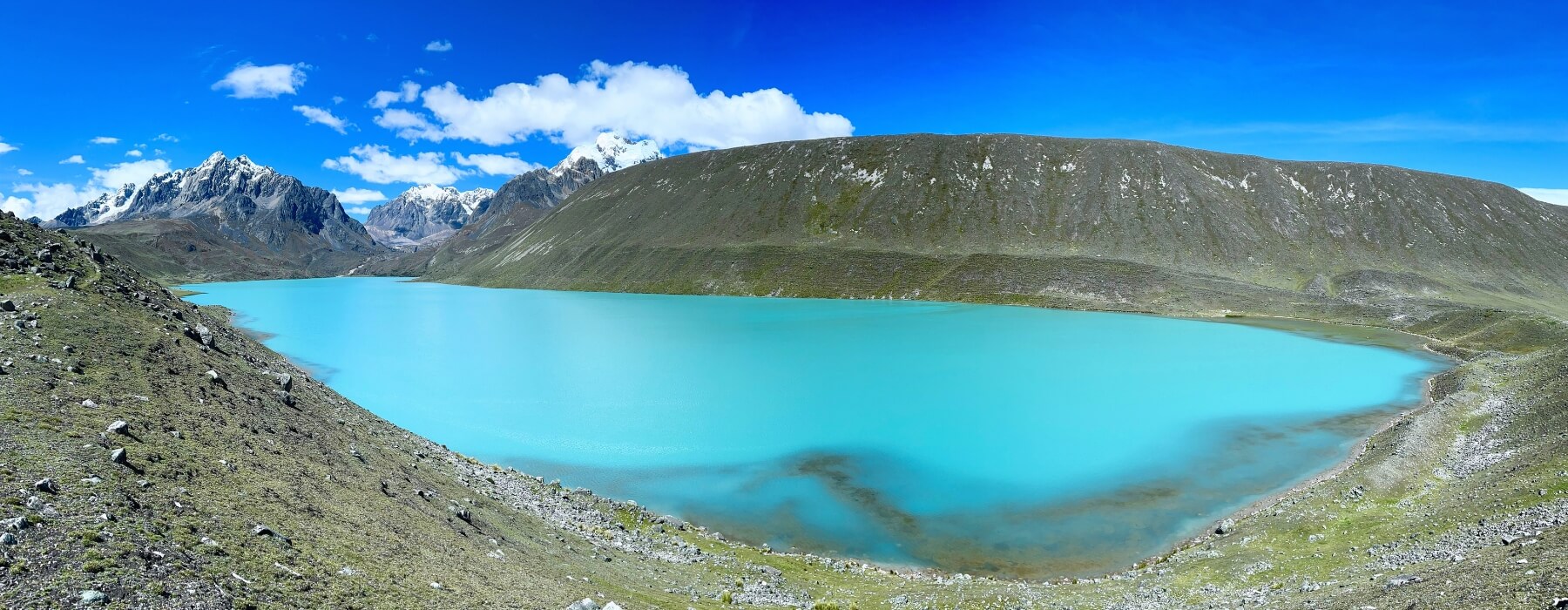
Few places in the South American continent and in the world offer landscape scenarios like those of Singrenacocha lake, its turquoise and blue waters are the result of the last period of the Wisconsin glaciation that covered a large part of the Andes mountain range. Today Mother Nature in the Andes is known as Pacha Mama, she gives us this beautiful lake, where, according to the stories of the local inhabitants, special beings inhabit, and it is also the setting where the great peaks are dressed in their sacred mantles of snow. perpetual, the people of Cusco address them with great respect, they are our protectors and givers of life through their crystalline waters that flow down forming streams and large rivers, for the use of agriculture and livestock.
This natural wonder is already available for you to visit with your friends and family, but always stressing the main rule, this planet belongs to all of us, so we must protect it, and leave each space we visit as we found it, clean of all waste and waste generated by travelers. So that future generations continue to enjoy its charms.
This beautiful lake is located 100 km from the city of Cusco with a height of 4450m; in the Vilcanota mountain range, very close to Nevado Ausangate between the districts of Ocongate and Marcapata, at a distance of 3 hours by bus from the imperial city of Cusco, being a source of life that houses in its surroundings some high Andean regions, to the As well as a rich variety of wildlife typical of this region of Peru, such as; llamas, alpacas, vicuñas, vizcachas, condors, eagle foxes among many others. It has an extension of 3.82 km long and 0.88 km at its widest part. Singrenacocha is surrounded by spectacular landscapes and mountains that are part of the Vilcanota mountain range, such as the Wallpayuq, Chumpe and Callangate mountains.
Singrenacocha comes from the Quechua language, whose translation into Spanish would be siren lagoon, an impressive lagoon that changes its color three times a year between turquoise, blue and light green tones. According to the stories of the inhabitants who live around this beautiful turquoise lagoon, stories are told that on moonlit nights it is sometimes possible to hear the sweet song of the siren that lives at the bottom of its turquoise waters. Another of the myths that is told is that if a single man walks around its edges without any company, he could be seduced by the songs of the siren who would put a spell on him and then take him to the bottom.

The turquoise waters of Lake Singrenacocha are fed by rivers where large active glaciers, such as the Kayangate, are pushing through rocky valleys upstream. Glaciers work like bulldozers, crushing and pulverizing rock along the floors and walls of the Andes mountains. The process produces a fine-grained dust of silt and clay (glacial meal) that is picked up by meltwater streams. Because the particles are so fine, they are slow to sink to the bottom, remaining suspended in the water column. When sunlight hits the water, these particles absorb the shorter wavelengths: purples and indigos. Meanwhile, the water absorbs the longer wavelength reds, oranges, and yellows. That leaves mostly blues and greens to scatter back to our eyes.
As a conclusion, we can say that water does not always look blue, but rather due to natural causes such as salinity, the presence of bacteria, algae or other microorganisms, temperature, the chemical composition of the rocks that contain it or the In the presence of suspended sediments, some bodies of water spread over the Earth present really surprising colors.
If you are planning to visit the beautiful city of Cusco, surely your main objective is to go to Machu Picchu, since it is considered one of the seven Wonders of the World. But Cusco also has infinite natural treasures that are hidden in the deepest paths of the Andes, such as the dazzling mountain of Vinicunca colors, or the great park of Ausangate glaciers. That is why it is recommended to all travelers who want to live unique experiences, to embark on a 1-day guided tour of the circuit of the Singrenacocha Lagoon, which is one of the best mirrors of turquoise water that you can find in Peru.
To do this route it is recommended to acclimatize at least two days in Cusco, and thus be able to avoid the famous altitude sickness “Soroche”, it is not advisable to start a walk almost immediately or the day after your arrival in the city of Cusco, because you could suffer headaches, or vomiting as a result of poor acclimatization. Surely you have heard about the medicinal properties of the Coca leaf, but be very careful, this sacred leaf is not a medicine that will cure you of altitude sickness, it is normally consumed by the inhabitants of the Andes to reduce fatigue and this takes effect when they are chewing many Coca leaf buns, which in itself does not provide any action against altitude sickness. It will be much better to take a tablet recommended by your doctor. And most importantly be very well hydrated all the time.
From the point where the car will leave you, which is the viewpoint of Lake Singrenacocha, you must walk towards the bottom for approx. 20 minutes, it is there where you will be dazzled by the super intense colors of light blue, blue and turquoise. The terrain is steep, so it is recommended that you wear good hiking shoes, preferably with ankle protectors and thick soles. Once you have finished taking all the photos, you must start the return route to the viewpoint, which will take you 30 minutes, all uphill.
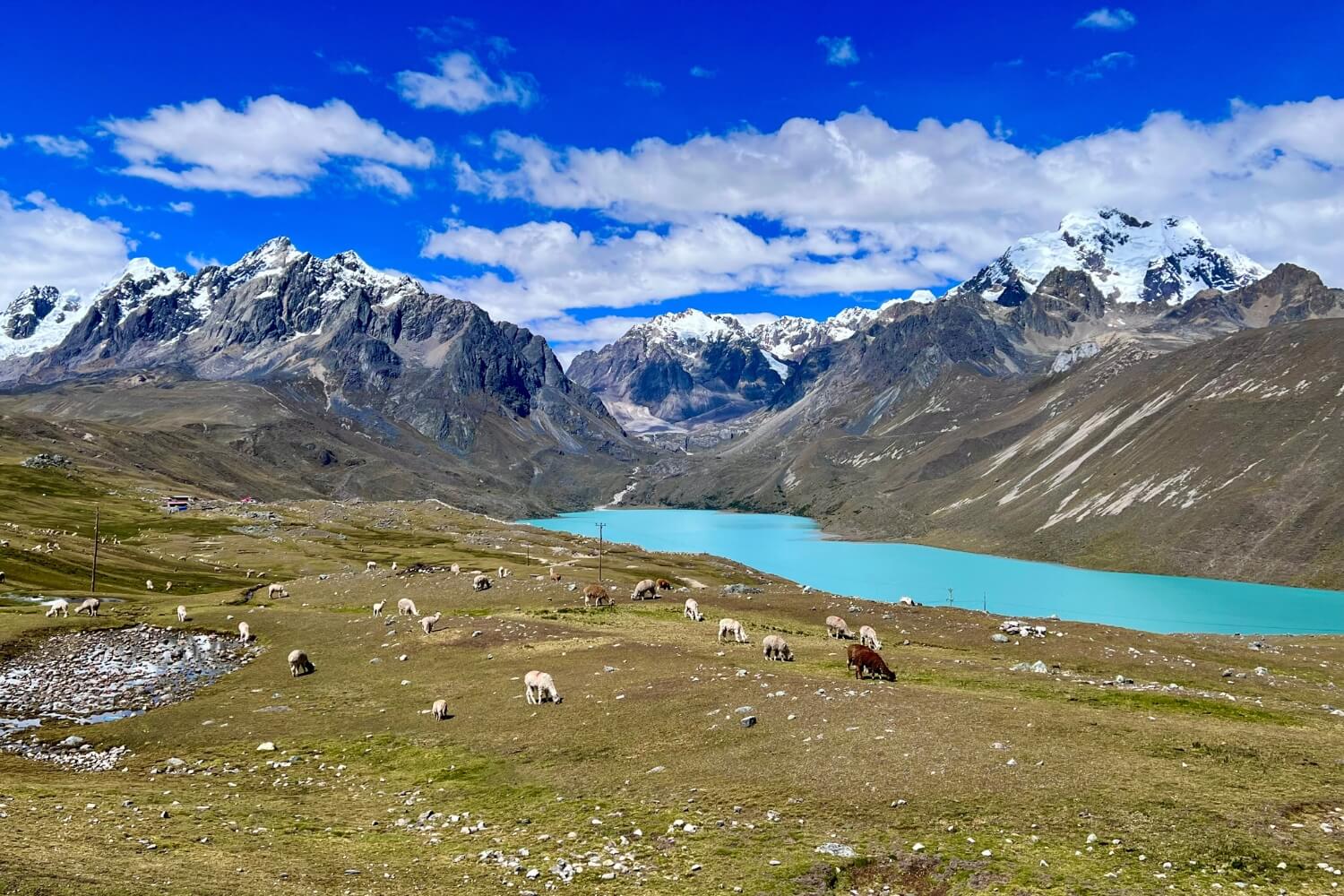
Peru is located in the southern hemisphere (South America), near the equator, so it should have a tropical climate, which it does; but only to the north where the Amazon forest region is. On the other hand, further south, in the Cusco region, where the turquoise lake of Singrenacocha is located, the landscape is surrounded by great mountains of the Andes, which create diverse microclimates such as inter-Andean valleys, high Andean glaciers, ichu plateaus, and forests of dwarf trees such as Queuña and Chachacoma.
Thus, the climate of this region of Peru only has two seasons: summer, which is from November to March, on these dates the Andes mountains usually cause heavy rainfall, and in places above 4,000 meters it is usually covered with snowfall.
And the most recommended season to visit Lake Singrenacocha is from May to October, because there are very few chances of showers, and Mother Nature will reward you with beautiful sunny days with blue skies. The only disadvantage in these months is that the famous southern winter begins, in the mornings and nights it is very cold, there are dates where minimum temperatures of up to -2 C ° are recorded. Before it you should wear a good coat, gloves, sunscreen and sunglasses, since radiation in the Andes is something extreme.
The visit to Lake Singrenacocha is usually only 1 day, unless you plan to explore other circuits such as the Nevado Ausangate route. Being an activity of a few hours in the mountains, you must carry a small backpack to carry a bottle of water, nuts, snacks such as cookies, chocolates or cereal bars. Be well prepared so as not to forget to wear good hiking shoes, a feather jacket, and as a precaution also a raincoat, if it drizzles. If you want to buy a local handicraft, please bring cash, in soles.
Surely you have seen many blogs or videos of people who make visits to tourist places on their own, well what they do not tell you is that these people normally never go alone, mostly they are in groups of travelers who visit different attractions and they They make believe that going without a travel agency is much better, but this is far from reality, since when you hire the services of a company you are getting many points in your favor, such as security during the expedition; because if any situation of falls or altitude sickness occurs, the mountain guide will evacuate you immediately. Another point in favor is that it is not the same to go on a bus without hearing the stories and curiosities of the towns that are visited, so a tour guide is the authentic cultural ambassador of each site that you visit.
And if you contract the tours through informal agents, you are simply putting your integrity at risk, or sometimes they will not comply with the services offered, or even cases of scams. By contracting with a travel agency registered in the registry of tourism providers, you are providing greater formal job opportunities to guides, cooks, drivers and artisans, who link a happy and safe job.

When hiring the tour to visit Singrenacocha Lake, you will be picked up from your hotel or accommodation in the city of Cusco.
Then you will be transferred in a tourist transport, whose seats are comfortable, and with air conditioning, you will also make stops at places that have panoramic views along the route.
You will also be accompanied by a local guide who will be by your side all the time explaining to you about the geography, history and important data of the Andes.
You will have a Picnic breakfast and lunch with an incomparable landscape, the meals are prepared by a cook, who will be able to serve you food even if he has certain dietary restrictions.
Will you have an experienced photographer, and do you know who he is? Well, our guides are very good at taking the best photos for your memory.
On the route to Lake Singrenacocha you can also enjoy the thermal baths of Pampa Cancha and Pacchanta, there are also associations of artisans who will receive you very kindly in their houses, there you will learn about the process of making fine textiles, with natural dyes, Many of the iconographies are even from the Inca period. During the potato harvest season, you will enjoy the flavors and colors of organic potatoes. More than 500 varieties of potatoes are grown in Ocongate.
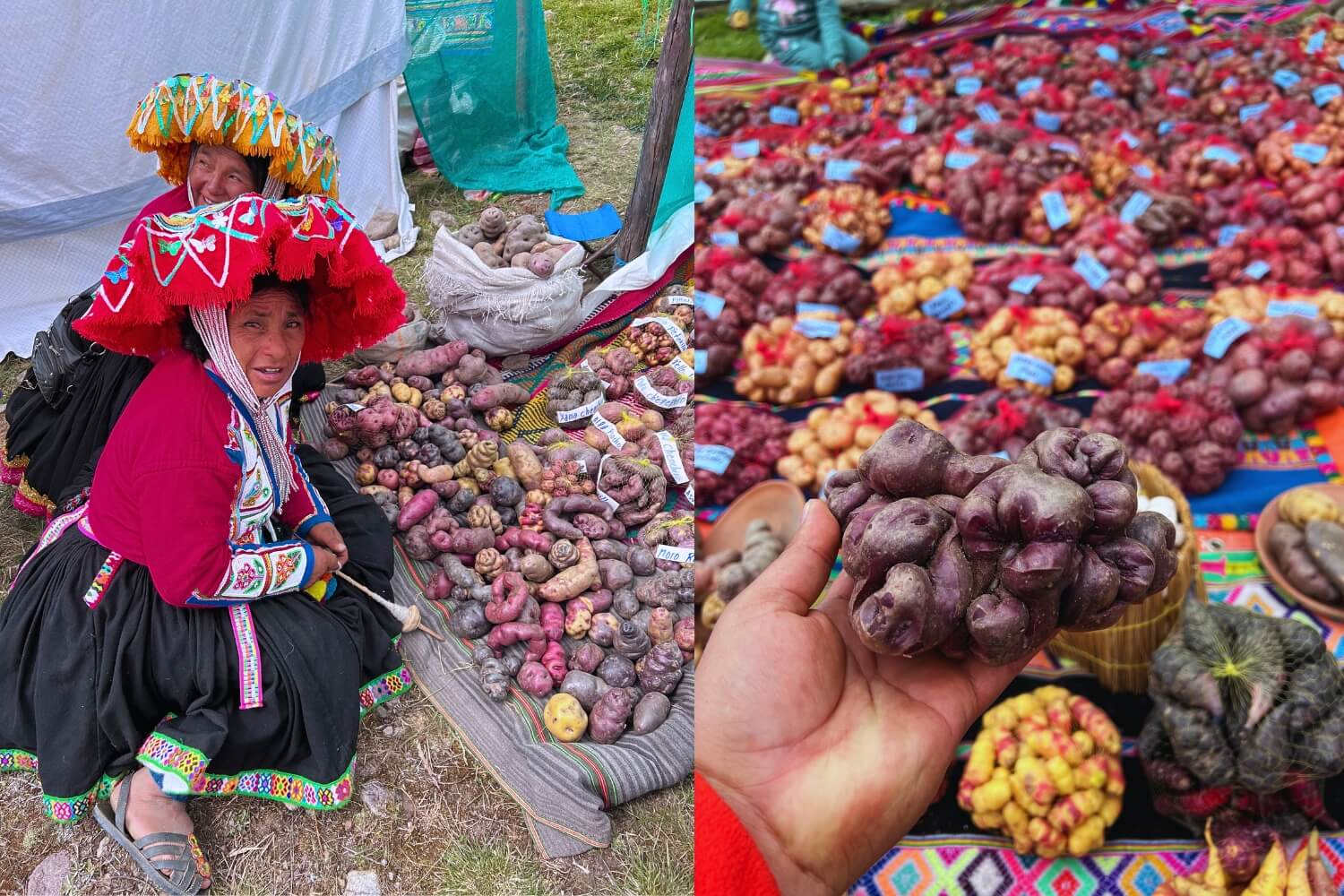
Lake Humantay became very famous due to the Instagram posts that were very trending, since before it was only visited by hikers on the Salkantay Trek route to Machu Picchu. Regarding the dimension, the Humantay Lagoon is small when compared to the Singrenacocha lake.
The turquoise color of Lake Singrenacocha is by far more beautiful than that of Humantay. An important issue to keep in mind is that nowadays the Humantay lake is very visited and does not offer many options to take photos.
Compared to the travel time, both have almost similar distances of three hours, and a walk of 20 to 30 minutes. If you are a lover of visiting little-visited places and beautiful landscapes, we recommend you travel to Laguna Singrenacocha lake.
It is recommended that you check beforehand about the availability of the tour to Singrenacocha Lake and the weather conditions that will be experienced on the date of travel. It is always better to make an advance reservation at least 1 month before your trip to Peru, that is correct since there are not always places available at the last minute. It is important to mention that in cases of cancellations, you should normally inform your travel agent at least 12 hours before starting your trip, because otherwise you will be charged 100% of the services, since the tourist services are planned several days in advance. In case you have to change the travel date, it is still suggested to call your travel agent indicating the reasons why you will have to change the travel date, and sometimes you may be subject to certain penalties.
To make a reservation for the tour to Lake Singrenacocha, you must go to our website where there is the following link of the Program:
Tour to Singrenacocha Lake 1 Day
Once there you will have to choose the travel date and personal data, as the last step is the payment that you can do with your debit or credit card, you can also pay by PayPal, both payment options have a 5% charge . At the end of the payment, your reservation vouchers will be generated immediately. You only need to send the name of your hotel by mail for the pick up.
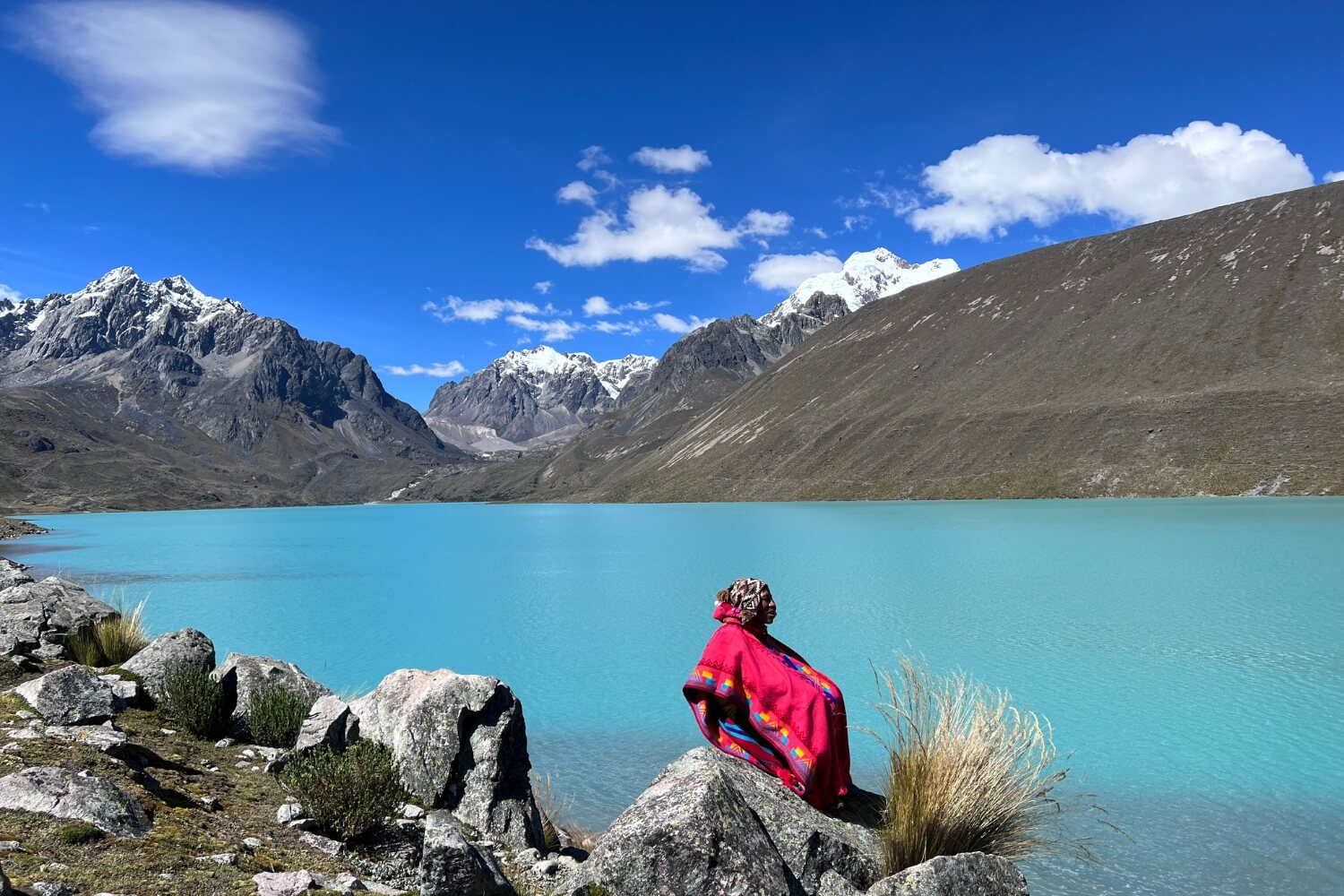
The hike to Lake Singrenacocha is of little difficulty, so it is not necessary to carry hiking poles. But if you are used to trekking with trekking poles it will be very helpful to carry a pair of poles. Since it will help you on very steep descents, avoiding ankle sprains. You can also rent them in the city of Cusco, there are all costs.
The Ocongate Plateau and Singrenacocha foothills deposit. To the east of the Cordillera de Ausangate they are covered with alluvium. To the south of Ocongate and Tinki, the accumulation of moraines and fluvioglacials have formed a large area of 6 to 8% inclined piedmont, which has been cut by the latest advances of glaciers and torrents. The drainage is dendritic and the valleys have the same transverse profile as the Vilcanota. In all cases of glacial erosion, beautiful trough valleys predominate whose thresholds have given rise to the formation of numerous lagoons (Pistacocha, Pucacocha, Singrenacocha and Ampatuni). Deposition of the lower to middle Paleozoic marine series. The organic schists attest to sedimentation, if not deep, at least pelagic in a reducing medium. The detrital levels of sandstone or fine quartzite, relatively weak and far from the coast, must have accompanied significant but difficult to appreciate subsidence.
A classic alpine or Cordillera type, where ice currents leave magnificent lateral and frontal moraines below very deep U-shaped valleys (Singrenacocha), north and south of the Ausangate-Callangate Cordillera, which originates from the confluence of the glaciers coming in periods of growing. The traces of ancient glaciations reach 3,600 m. altitude in Ocongate and to the East of the Vilcanota River, 3,900 m. Silt or very finely sandy levels are from 1 mm. up to 10 cm. thick (generally 1 to 5 cm.), gray in color and due to weathering gray green or yellowish, micaceous or not, alternating with dark blue gray shales, micaceous and slightly siltstone or not with a similar thickness.
Regarding the vegetation around Lake Singrenacocha, we can say that the herbaceous and shrubby species are the most representative, although some areas of the territory also lack vegetation cover. Among the shrubby species there is a very representative plant of the Puna, it is the reeds of the lagoons. The growth and development of these shrubs in larger proportions creates refuges for birds. Among the shrubs it is very common to find the ichu (Stipa ichu) used for fodder purposes, the colli (Buddleja coriácea) and the queñoa (Polylepis sp). Another dominant shrubby species is Satureja sp. and in the grass family, chillihua (Festuca dolichophylla) dominates.
The most characteristic animals that you can see in the Singrenacocha lagoon are the auquénidos, such as the vicuña, which is a wild species; the llama and the alpaca, which are domestic species. Within the group of mammals we also find the gray deer, the vizcachas (a large rodent with a furry tail), the skunk or predators, such as the Andean cat, the Andean puma and the Andean fox.
Among the bird species you can see the Andean flamingo, the wallata (the Andean goose), the Andean hummingbird, the horned coot, the yellow-billed duck, the condor, the goldfinch and others. And finally, smaller animals are also present, such as snakes, toads and frogs, lizards and a large number of insect species. In addition we can find and trout, which are the basis of several typical traditional dishes of the Cusco region.
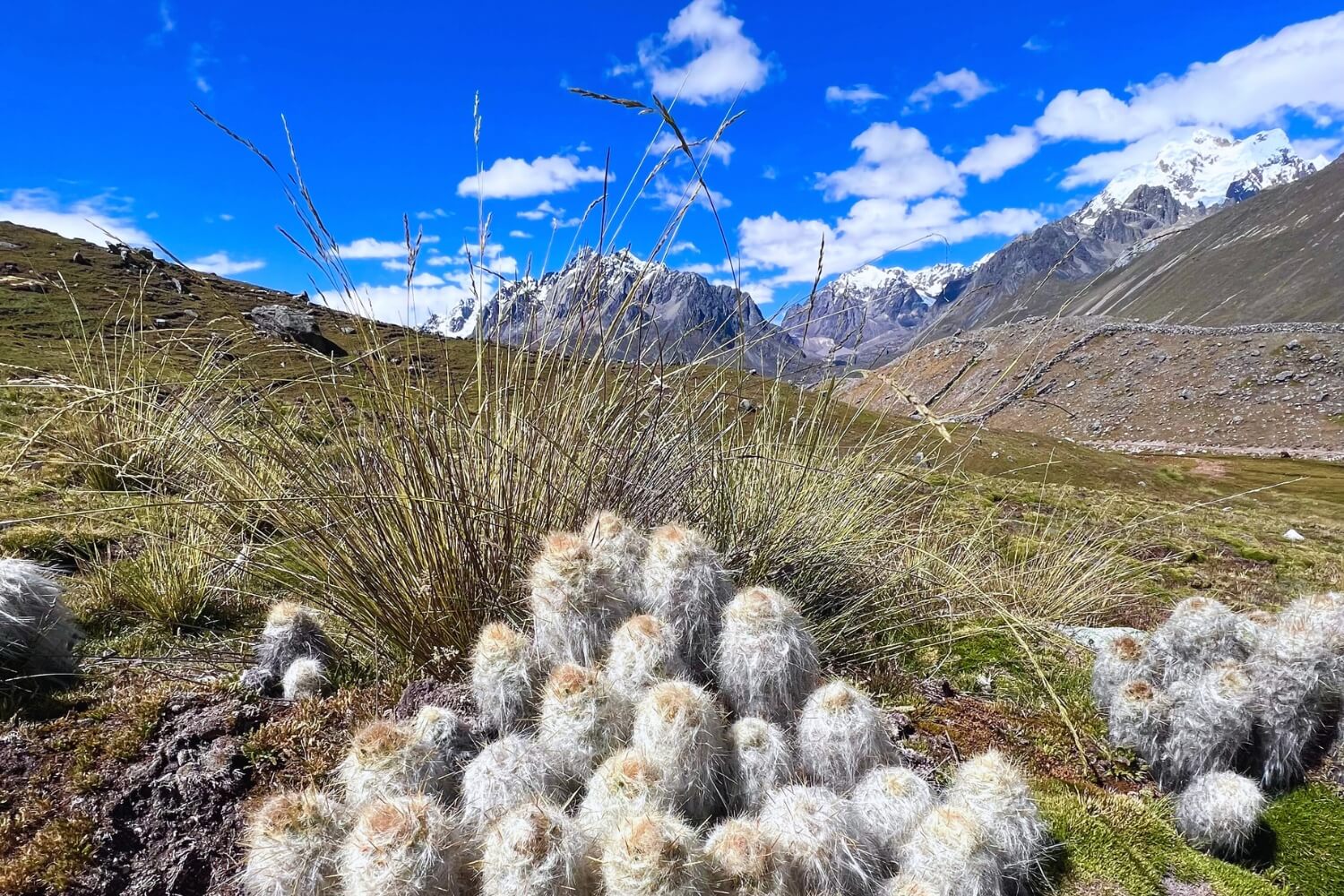
The myth that tries to explain the Origin of the Travels of the Qollas to the Quechua zone and the Gift of the Maize Qonopa “MAMA SARA” to the Qolla Mariano Inkilli. Ancestral myth of Pre Inca origin transmitted from generation to generation as an imperishable memory of the Importance of Machu Apu Ausangate.
The great Apu Ausangate was therefore lord of this world, before him the souls that came out of the bodies of the deceased went to atone for their sorrows. This great Apu had 6 sons and daughters, the oldest of whom was called Tomasa Saq’a Puma. One fine day the Apu Ausangate together with his sons and told them: “A Qolla son-in-law will soon come to this side, he has asked me for the hand of his sister Tomasa Saq’a Puma.” Sawasiray (Apu protector of the Sacred Valley) who was the eldest son of the Machu Apu Ausangate, concerned said: “now this Qolla son-in-law will take all the crop products and he will not listen to us, let him take only the cattle and not the farm products.” crop, he said annoyed. So he gathered all of his male brothers and they agreed: “You can’t take everything, they said- just take the cattle but not the Products.”
The Qolla Mariano Inkilli conquered Tomasa Soq’a Puma, the eldest daughter of Apu Ausangate, marrying only to take advantage of access to Quechua territories and transfer the corn seed to her domain.
Tomasa’s father; The Apu Ausangate; he complies with the couple giving away cattle and seed so that they serve as sustenance for the newlyweds; Tomasa’s older brother; the Apu Sawasiray feels jealous of the father’s actions and sends a bird to steal the corn seed that was in the possession of the couple, who were already in the Abra de Raya Pata (current border between Cusco and Puno) where they already Chicha “T’INKANDO” had given the cattle, and at the moment Mariano was preparing to “TINKAR” the corn seed, the Chiwaku (thrush) came that quickly passed by saying Jiu Jiu, stealing the spirit of the seed in its beak of corn and due to his carelessness he dropped the seed in the Quechua area. Since then, Maize can only grow in the Quechua Zone, from La Raya to this side; leaving the cattle for the Qolla zone by virtue of the gift of the Machu Apu Ausangate to the Qolla Mariano Inkilli.

Before, Ausangate was a man you could lean on, a good man. He talked to the witches. He himself told them what things he needed and how they could help him. The Ausangate himself taught them how to offer an offering, with which they had to fill the cup: with wine or with drink. Formerly they had known how to speak. The peasants and the sorcerers spoke with Ausangate as neighbors. After talking they complied with what he had ordered.
Through them they met the Ausangate and if he was true or not that he lived. Thus they believed in the Ausangate. They knew a lot and spoke well. Still they did not distrust, but they pleaded with confidence as if the Ausangate were his father, and they pleaded with him as a brother for the success of his work, for the well-being of his animals or for him to be cured of the disease. . That’s why there were always enough animals. Likewise, there was a lot of produce from the farms. That’s why they trusted. When they planted the farm, they blew select coca leaves on it. They also poured a glass of wine to the Ausangate. That is why the Ausangate could not deny them nor forget and whatever they asked for was given to them.
In the same way they begged him for the welfare of their animals. So the Ausangate could not forget them. All the peasants went when they sowed the fields and when their crops began to grow. They brought everything the Ausangate asked for. There they were with their good products to offer to the sacred mountain of Ausangate. When they arrived with his offering, the Ausangate received them with pleasure. They delivered the offering pouring wine and drink. That is why there was no hail or frost for them. They were not worried that their animals would die, they lived in confidence. When they did not do so, the Ausangate did not help them either. He did not give them animals or potatoes. The animals died of themselves. Later, even their farms were hit by the hail. If they lived with him, nothing happened on the farms. The river that comes out of Lake Qomercocha, Ausangate and Kayangate are giving away water from their homes. Afterwards the water is distributed on this side and on the other. That water is called Element, that’s how the Andean priests know it.
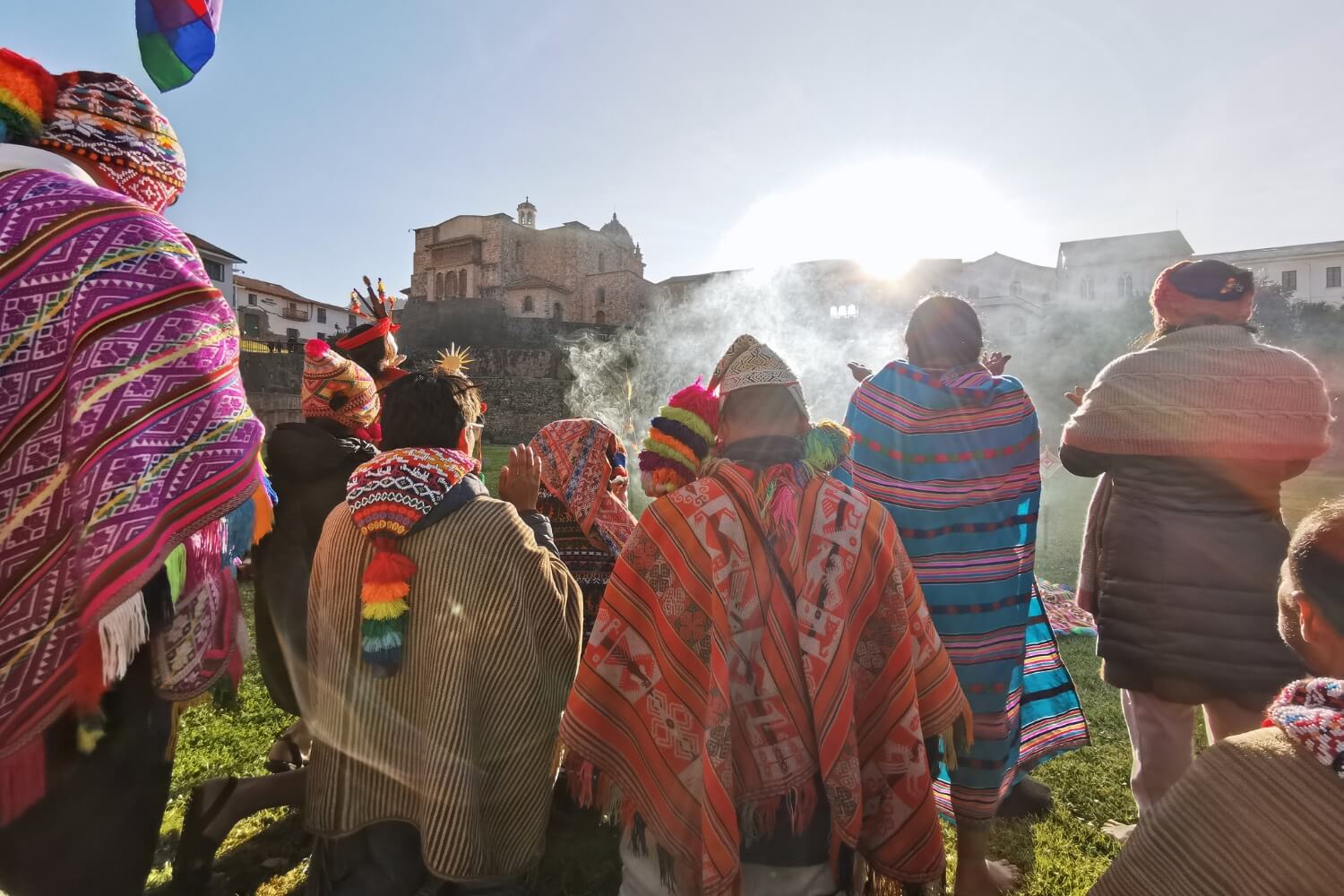

Discover the largest trail used by the Incas, to communicate between the sacred cities of Machu Picchu and Choquequirao, passing through the high mountains of the snowy Salkantay. Our tour is designed for lovers of the most demanding trekking circuits.
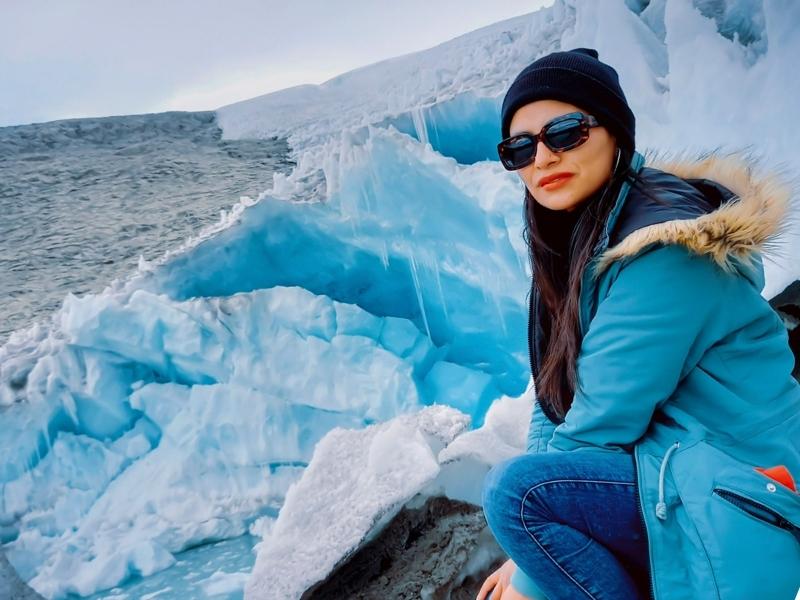
Explore the impressive red valley and Vinicunca Mountain of Colors. Visit the largest tropical glacier in the world Quelccaya next to the beautiful blue Sibinacocha Lagoon, surrounded by snowy peaks and plains inhabited by llama herders.
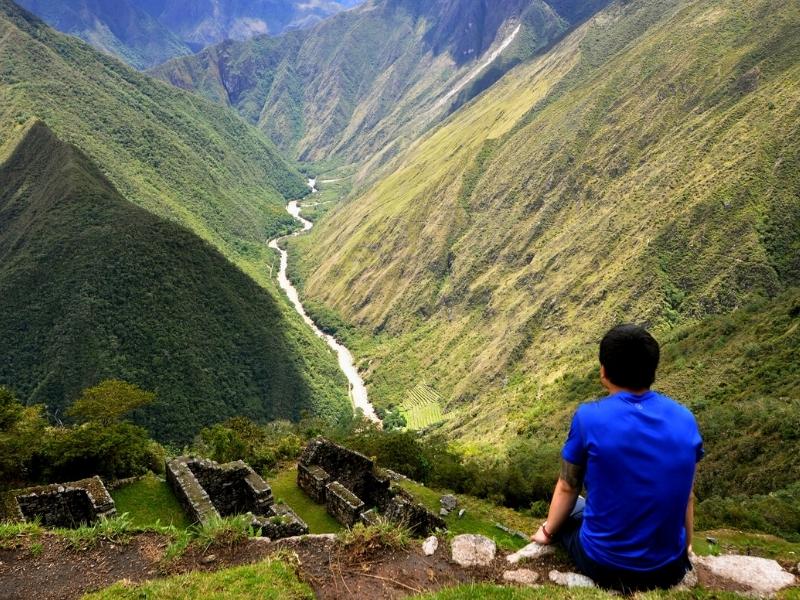
Explore the Manu Amazon Rainforest & Inca Trail hike to Machu Picchu, you will enjoy the best adventures in Peru, exploring amazing inca trail routes and the best amazon wildlife with our local tour guides, in small groups.
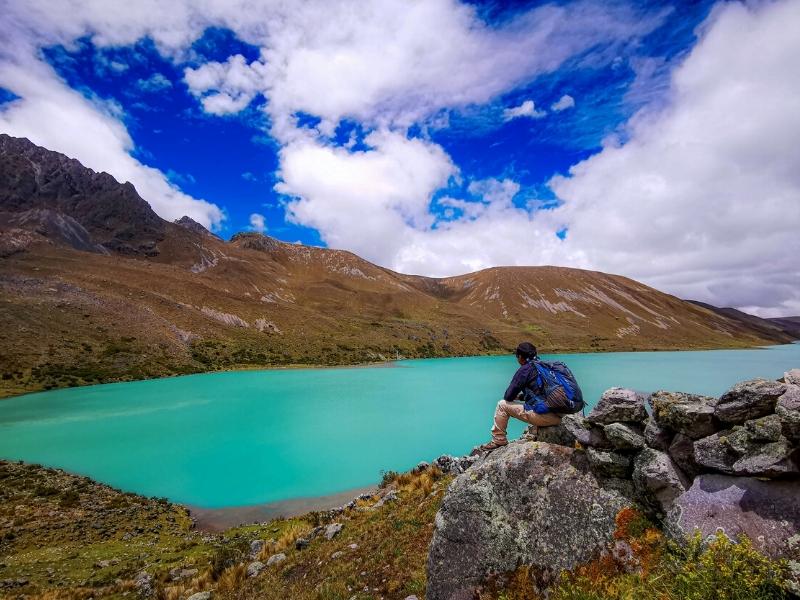
Singrenacocha turquoise Lake Day Hike is located about 3 hours away from Cusco City. This stunning lake offers up a great day trip option for those looking for amazing mountain views and gatorade blue water without much effort. The drive takes you right to the lake where you can walk small trails exploring different vantage points with the company of local farmers and their alpacas
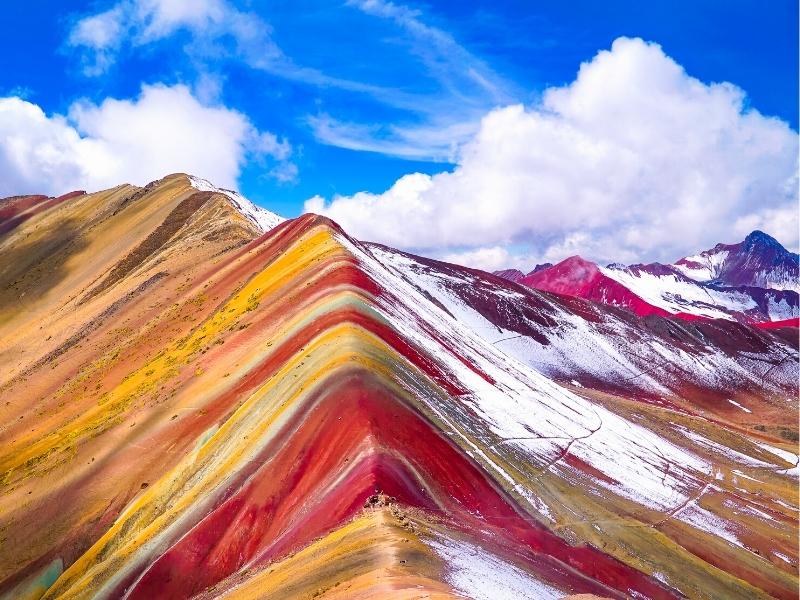
Explore the mythical mountain of Ausangate Trek, and the rainbow mountain. Andean Great Treks organizes this tour only in small groups, with the best trekking equipment.
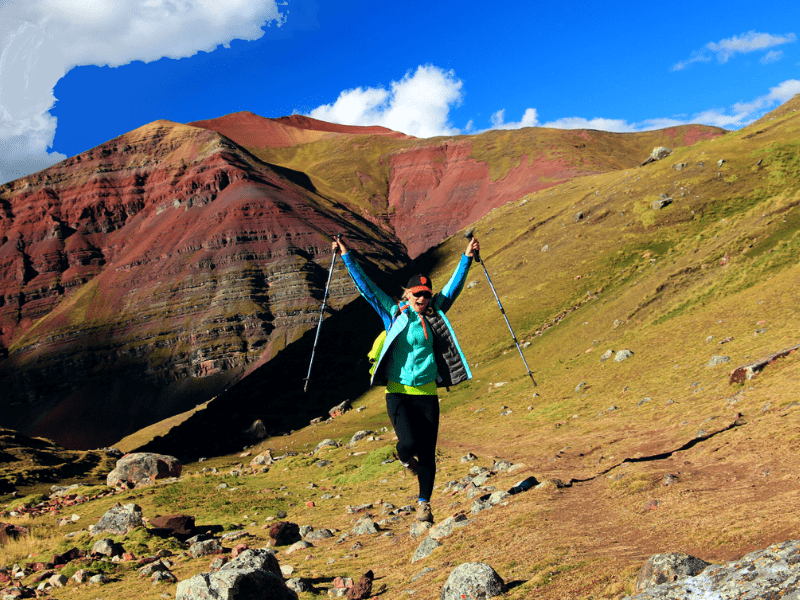
Ausangate Trek & Rainbow Mountain, Explore this route of turquoise lakes, imposing snow-capped mountains, little-visited trails and Very experienced trekking guides.